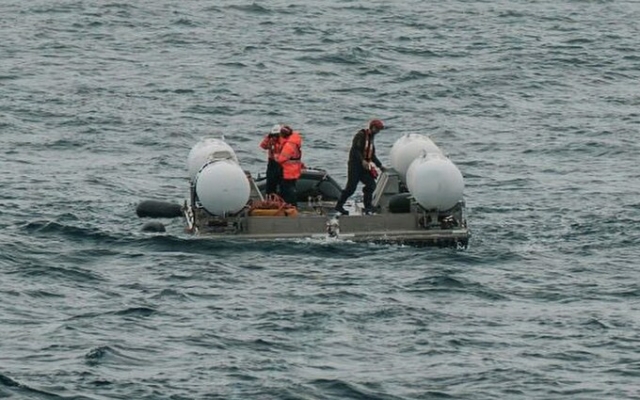 Titan just before Sunday's dive. Photo: Action Aviation via AP. , and some experts argue that it's more difficult than flying into space. Here are four things that could go wrong for the Titan and its crew.
Titan just before Sunday's dive. Photo: Action Aviation via AP. , and some experts argue that it's more difficult than flying into space. Here are four things that could go wrong for the Titan and its crew.
Power Loss
The Titan is battery powered and any loss of power would cut off communications with the surface. It's not clear if the submersible had a back-up system, but if so, it looks like it failed as well.
Submersibles tend to have a «falling weight» or mass that they can shed in case of an emergency or a power outage to bring them to the surface.
In this case, the apparatus will wiggle on the surface. waiting to be found, and may have deviated far from their original point of impact due to strong ocean currents.
Titan's underwater depths and dangers
Professor Alistair Greig, professor of marine engineering at University College London, said: “Submarines are not designed to stay on the surface, so it will be very uncomfortable for passengers.”
However, experts warned that it would be a “long climb” back to the surface if the cargo being dropped was deployed.
FireA short circuit on board could lead to sparks and fire. In addition to igniting electrical systems, the crew will face an immediate danger of poisoning by toxic fumes, which will quickly burn up air supplies and create a toxic atmosphere.
The ship may have a built-in breathing system — a kind of oxygen mask for use in emergency situations.
p>Flooding
Submersibles face increasing pressure as they go deeper. At 12,500 feet (the depth of the Titanic), the ship would have to withstand over 6,000 pounds of force per square inch.
Although the Titan was built to withstand this kind of pressure, it must remain in a very round shape to evenly distribute the pressure throughout hull. Even a small dent in the form can lead to catastrophic consequences.
“Any out-of-circulation defect could lead to an almost instantaneous explosion (less than 40 milliseconds) at this depth,” said Professor Eric Foosil, director of the shipbuilding center at the University of Adelaide.
or seismometers such a phenomenon if Titan suffered the same fate,” he added.
Titan Titanic Slider Submarine
The US government has a network of sensors in the Atlantic, operated by the Theater Underwater Surveillance Command, which could to catch explosive decompression or other sounds from the submersible.
Steffan Watkins, a Canadian research consultant who tracks ships and aircraft, said: “This creates an ethical dilemma; if they know, they say? Does it give away the sensitivity of their sensor network if they do or not, shall we say?»
Entanglement
Strong currents can occur underwater and submersibles stay away from anything that can confuse and block them.
A sunken ship like the Titanic can be dangerous if you get too close, where the Titan can become trapped and struggle to free itself.
If the Titan is close to the sea floor and is trapped or unable to rise under its own power, the possibilities are limited, as few rescue vessels can dive deeper than the continental shelf — about 650 feet.
Experts warn that even the Navy's rescue submarines could not reach the level of the Titanic, and even if they could, their hatches would not be compatible with the Titanic. The depth of even military nuclear submarines is limited to 1640 feet.

























































Свежие комментарии